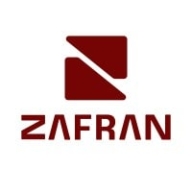


Tenable Nessus and FortiCNAPP compete in the vulnerability detection and management category, with Tenable Nessus having the upper hand due to its comprehensive coverage and ease of integration.
Features: Tenable Nessus offers comprehensive vulnerability coverage, predictive functionality for prioritization, and reliable reporting capabilities. It is also known for ease of integration with other tools. FortiCNAPP provides strong cloud configuration compliance, anomaly detection, and utilizes machine learning for insights into security data, allowing for effective cloud environment management.
Room for Improvement: Customers of Tenable Nessus want better reporting functionalities and improved integration with external security tools. There is also a call for enhanced user access controls and cloud-based deployment support. Users of FortiCNAPP desire better integration with third-party systems, improved scalability, and a more simplified user interface. Communication regarding platform updates also needs clarity.
Ease of Deployment and Customer Service: Tenable Nessus is easy to deploy in on-premises environments, with some hybrid cloud support, and its technical support is generally well received, though response times need improvement. FortiCNAPP, mainly available in public and private cloud setups, has responsive customer service that aids in dashboard usage, catering well to modern IT needs.
Pricing and ROI: Tenable Nessus is recognized for competitive pricing suitable for smaller enterprises, offering flexible licensing that balances cost with extensive features, resulting in significant ROI. FortiCNAPP, while more expensive, provides value through robust cloud security capabilities, with pricing reflecting advanced features suited for evolving cloud environments, achieving ROI via enhanced threat detection and mitigation strategies.
| Product | Market Share (%) |
|---|---|
| Tenable Nessus | 5.9% |
| Zafran Security | 1.1% |
| FortiCNAPP | 1.3% |
| Other | 91.7% |

| Company Size | Count |
|---|---|
| Small Business | 4 |
| Midsize Enterprise | 4 |
| Large Enterprise | 4 |
| Company Size | Count |
|---|---|
| Small Business | 39 |
| Midsize Enterprise | 19 |
| Large Enterprise | 35 |
Zafran Security integrates with existing security tools to identify and mitigate vulnerabilities effectively, proving that most critical vulnerabilities are not exploitable, optimizing threat management.
Zafran Security introduces an innovative operating model for managing security threats and vulnerabilities. By leveraging the threat exposure management platform, it pinpoints and prioritizes exploitable vulnerabilities, reducing risk through immediate remediation. This platform enhances your hybrid cloud security by normalizing vulnerability signals and integrating specific IT context data, such as CVE runtime presence and internet asset reachability, into its analysis. No longer reliant on patch windows, Zafran Security allows you to manage risks actively.
What are the key features of Zafran Security?
What benefits can users expect from Zafran Security?
In industries where security is paramount, such as finance and healthcare, Zafran Security provides invaluable protection by ensuring that only exploitable vulnerabilities are addressed. It allows entities to maintain robust security measures while allocating resources efficiently, fitting seamlessly into existing security strategies.
FortiCNAPP is a comprehensive cloud security platform focusing on ease of use and machine learning-driven anomaly detection. It offers robust compliance reporting, seamless integration, and continuous monitoring, making it an essential tool for organizations managing multi-cloud environments and security configurations.
FortiCNAPP provides significant capabilities in cloud security, compliance, and vulnerability management. Designed for organizations needing efficient monitoring, it enables detection of anomalies across cloud infrastructures while optimizing security posture and ensuring compliance with environments like AWS and GCP. The platform offers in-depth insights through scanning of IAC scripts, host systems, and cloud configurations. Recognized for effectively managing security posture, it safeguards Kubernetes and container environments, providing comprehensive threat detection and response. However, some areas like visibility, IAM security controls, and compliance metrics need improvement. Users face challenges with alert setup and lack intuitive design, alongside issues like FedRAMP authorization absence and complexity in the data model.
What are the key features of FortiCNAPP?FortiCNAPP is implemented extensively by industries needing reliable cloud security, such as finance, healthcare, and technology sectors. It supports organizations in enhancing cloud infrastructure protection, ensuring compliance, and strengthening vulnerability management. By integrating with platforms like AWS and GCP, businesses can optimize security posture in their cloud deployments.
Tenable Nessus provides an efficient vulnerability management system with swift deployment and comprehensive scanning capabilities, making it an ideal choice for organizations seeking to enhance their security posture through effective threat detection and mitigation strategies.
Renowned for its top-tier vulnerability detection, Tenable Nessus offers a robust platform that integrates effortlessly across systems, enhancing threat management through automation, real-time monitoring, and customizable scanning options. Its broad asset coverage, including network devices and applications, coupled with ease of deployment, positions it as a go-to option for risk assessment and compliance. Organizations value its extensive reporting features and database, although they suggest enhancements in reporting formats and false positive detection. A more intuitive interface, improved cloud support, and competitive pricing models are sought after to cater to evolving enterprise needs.
What are the key features of Tenable Nessus?In industries such as finance, healthcare, and tech, Tenable Nessus is implemented for scanning internal and external networks, identifying risks, and ensuring data protection compliance. Organizations conduct regular scans to detect security vulnerabilities in servers and databases, leveraging its capabilities to strengthen their security frameworks while managing cloud infrastructures and enterprise networks efficiently.
We monitor all Vulnerability Management reviews to prevent fraudulent reviews and keep review quality high. We do not post reviews by company employees or direct competitors. We validate each review for authenticity via cross-reference with LinkedIn, and personal follow-up with the reviewer when necessary.